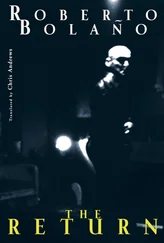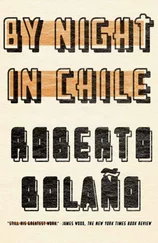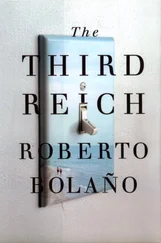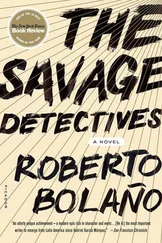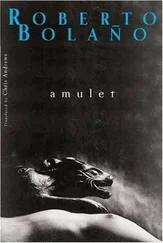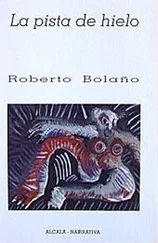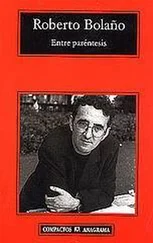Roberto Bolaño - Between Parentheses - Essays, Articles and Speeches, 1998-2003
Здесь есть возможность читать онлайн «Roberto Bolaño - Between Parentheses - Essays, Articles and Speeches, 1998-2003» весь текст электронной книги совершенно бесплатно (целиком полную версию без сокращений). В некоторых случаях можно слушать аудио, скачать через торрент в формате fb2 и присутствует краткое содержание. Год выпуска: 2011, Издательство: New Directions, Жанр: Публицистика, Критика, на английском языке. Описание произведения, (предисловие) а так же отзывы посетителей доступны на портале библиотеки ЛибКат.
- Название:Between Parentheses: Essays, Articles and Speeches, 1998-2003
- Автор:
- Издательство:New Directions
- Жанр:
- Год:2011
- ISBN:нет данных
- Рейтинг книги:4 / 5. Голосов: 1
-
Избранное:Добавить в избранное
- Отзывы:
-
Ваша оценка:
- 80
- 1
- 2
- 3
- 4
- 5
Between Parentheses: Essays, Articles and Speeches, 1998-2003: краткое содержание, описание и аннотация
Предлагаем к чтению аннотацию, описание, краткое содержание или предисловие (зависит от того, что написал сам автор книги «Between Parentheses: Essays, Articles and Speeches, 1998-2003»). Если вы не нашли необходимую информацию о книге — напишите в комментариях, мы постараемся отыскать её.
The Savage Detectives
Between Parenthese
Between Parentheses: Essays, Articles and Speeches, 1998-2003 — читать онлайн бесплатно полную книгу (весь текст) целиком
Ниже представлен текст книги, разбитый по страницам. Система сохранения места последней прочитанной страницы, позволяет с удобством читать онлайн бесплатно книгу «Between Parentheses: Essays, Articles and Speeches, 1998-2003», без необходимости каждый раз заново искать на чём Вы остановились. Поставьте закладку, и сможете в любой момент перейти на страницу, на которой закончили чтение.
Интервал:
Закладка:
But P. P. Cuéllar has an accident that will mark him for the rest of his life and make him different: the novel is the exploration of that difference , a collective attempt to explain Pichula Cuéllar’s progressive distancing from his peers until they are light years apart, a horror tale mixed with social realism. The distance between them, incidentally, is something that oscillates, that shrinks and grows, because Cuéllar may gradually become estranged from his peers but that doesn’t mean he stops trying to be part of the group, and his efforts to draw near are more painful, more revealing of the overall picture, than his radical distancing. His descent into hell, told in cries and whispers, is in a sense a foretelling of the narrators’ own descents into another kind of hell. In fact, what terrifies the narrators is that P. P. Cuéllar is one of them and that he never stops trying to be one of them, and it’s only fate that makes him different. In his difference, the narrators can see themselves in their true guises, the hell to which they could have been relegated and weren’t.
Anomaly is unbearable, although after the destruction of Cuéllar the storytelling voices find themselves faced with the flatness of adulthood, the quiet devastation of their bodies, the hopeless and complete acceptance of a bourgeois mediocrity from which Cuéllar has removed himself through horror, a price doubtless too high to pay and yet the only possible price, as the young Vargas Llosa at moments seems to suggest.
I previously mentioned the speed of The Cubs and its three twin sisters. I made no mention of their musicality, a musicality based on colloquial speech, on the voices that punctuate the story, and that are woven through by the speed of the text. Speed and musicality are two constants in The Cubs and in some way this brilliant exercise in speed and musicality serves Vargas Llosa as a practice run for the novel he would write soon afterwards, one of his great works and one of the best Spanish-language novels of the twentieth century: Conversation in the Cathedral (published in 1969), whose bold, original structure bears a strong resemblance to that of The Cubs .
Vargas Llosa’s first book was The Leaders . Among the stories in it is one that features the first appearance of Sergeant Lituma, who pops up like a chameleon throughout Vargas Llosa’s fiction; other stories are about the loose ends of a betrayal, the cruel joke of an old man, a double duel, a local tyrant. All are cold and objective. All show glimpses of a desperate pride.
THE PRINCE OF THE APOCALYPSE
The Real Life of Alejandro Mayta , like almost all of Vargas Llosa’s novels (except for his erotic fiction), lends itself to more than one or two readings. It can be read as the dream-turned-nightmare of some poor naïve youths and it can also be read as the relentless unfolding of a nightmare that to everyone’s surprise becomes gradually more bearable, more ordinary, less sad, and more inevitable. It’s also possible to read it — because of its structure and thesis or subject matter — as a footnote to Vargas Llosa’s masterpiece Conversation in the Cathedral , and it can even be read as a note or additional study or growth on another of his great works, The War of the End of the World , a novel which, read today, seems — at least to me — more revelatory than Conrad’s Heart of Darkness , which Vargas Llosa himself recommends to us as an aide to understanding the clash between East and West, between civilization and barbarism.
Of course, it can also be read as a portrayal of a certain cultural and social age, Latin American as well as Peruvian, dating from the first armed struggles in the name of revolution (and therefore Enlightenment) in the late 1950s and early 1960s to the era of the Shining Path and the millenarian guerrillas in the 1980s, during which — especially in Peru — the thing that came to be known as the Latin American terror was unleashed.
The Real Life of Alejandro Mayta plunges us into the worst of times. The guerrillas are advancing everywhere, sweeping everything away, the representatives of the right as well as those of the non-dogmatic left, against a backdrop that resembles certain paintings by Brueghel or an alien invasion. The scene is broadly sketched, to be sure, but in no way implausible. The citizens of Lima live in something like a state of permanent siege, and extreme violence is exercised not only by the millenarian guerrillas but also by the Police and the Army and also the death squadrons. In the midst of this chaos, a writer or a reporter, possibly Vargas Llosa or possibly not, decides to write the story of the first Peruvian guerrilla movement, founded in 1958, even before Fidel Castro seized power.
This is where Mayta comes in, and the portrait of Mayta is perhaps Vargas Llosa’s greatest achievement in this novel. Mayta isn’t a boy, but he acts like a boy, or in other words he lingers in a kind of deliberate adolescence, though one can’t say whether it’s intentionally sought or accepted with resignation. Objectively speaking, Mayta is maladjusted, but he isn’t violent or manipulative, much less a nihilist. Mayta belongs to a Trotskyist party with seven members, a splinter group of a Trotskyist party of twenty, but before that he belonged to the communist party and before that to the anti-imperialist, Marxist-influenced APRA, and he left each because of his natural tendency toward dissent and doubt. Mayta would like to shower every day but there’s no shower in the room that he rents and he has to content himself with going to the public baths once every three days. Mayta is fat and no one would call him attractive and he’s also gay at a time when being gay in Peru and Latin America was seen as despicable deviant behavior.
As a result, Mayta hides his homosexuality, especially from his comrades (because in matters of sexuality the Left and the Right march in lockstep in Latin America, like Siamese twins), and he sublimates it or crushes it under a mountain of propaganda work or activism or quartermaster duties that he takes on with the patience of a saint. To a great extent, that’s what Mayta is: a modern-day saint, tempted by the devil in the desert, whose commitment to others (or his pure faith) is so great that it seems monstrous.
That alone would make this a memorable novel. But there’s more: the young lieutenant who inspires Mayta, a naïve and impetuous leader whose fragility, sensed from the very beginning as a mambo or bolero plays, is conveyed in strokes that signal the end of innocence; Mayta’s recycled comrades and their different accounts of him; the small stories that the reporter gathers and that seem extraneous to the novel but that taken together weave a rich narrative web; the story of Professor Ubilluz, a model of the provincial Latin American intellectual; the composition of the novel, which is so much like a puzzle pieced together in the abyss; Vargas Llosa’s sense of humor, which leaps, in Balzacian fashion, even over his own political convictions; political convictions that give way in the face of literary convictions, which is something that only happens to real writers. And finally the kindness and compassion — which others might call objectivity — that Vargas Llosa shows his own characters.
Notes on Jaime Bayly
There are words in Bayly’s novels that pop up all the time but still seem mysterious to me. Sassy for example. I’ve always wanted to know exactly what that means. In Bayly’s novels I understand it, of course, but not entirely. And his characters are always sassy§§ ! As often as they’re spoiled rotten ¶¶, which is an activity to which all of Bayly’s characters devote themselves wholeheartedly: in his books everyone is spoiled rotten or tries to be spoiled rotten by other people or is spoiled rotten by the wrong people and, on top of it all, at the worst possible moment.
Читать дальшеИнтервал:
Закладка:
Похожие книги на «Between Parentheses: Essays, Articles and Speeches, 1998-2003»
Представляем Вашему вниманию похожие книги на «Between Parentheses: Essays, Articles and Speeches, 1998-2003» списком для выбора. Мы отобрали схожую по названию и смыслу литературу в надежде предоставить читателям больше вариантов отыскать новые, интересные, ещё непрочитанные произведения.
Обсуждение, отзывы о книге «Between Parentheses: Essays, Articles and Speeches, 1998-2003» и просто собственные мнения читателей. Оставьте ваши комментарии, напишите, что Вы думаете о произведении, его смысле или главных героях. Укажите что конкретно понравилось, а что нет, и почему Вы так считаете.



